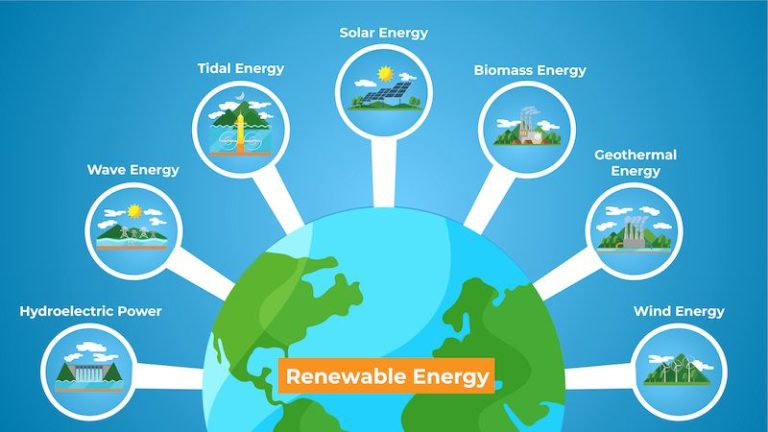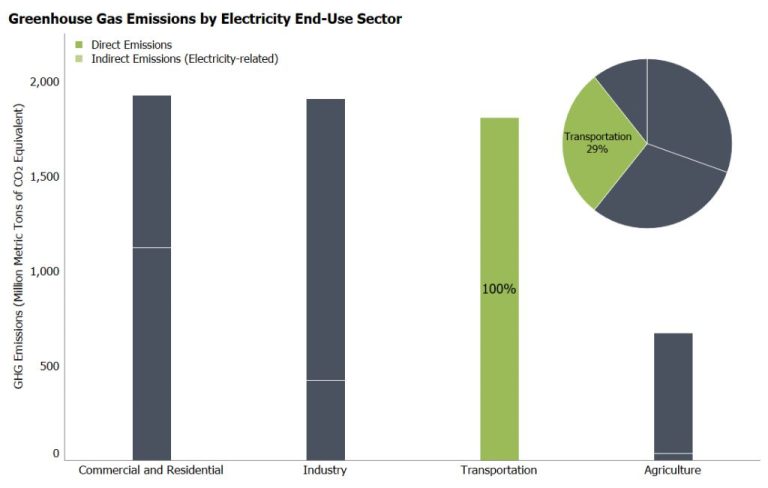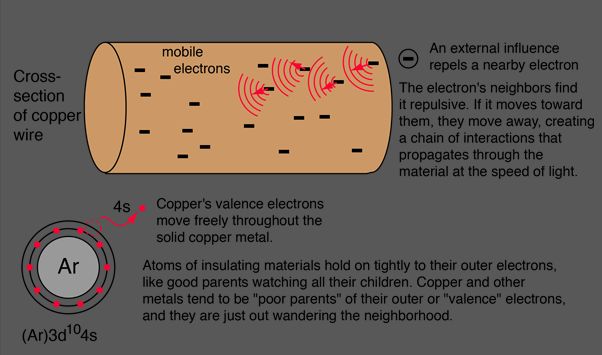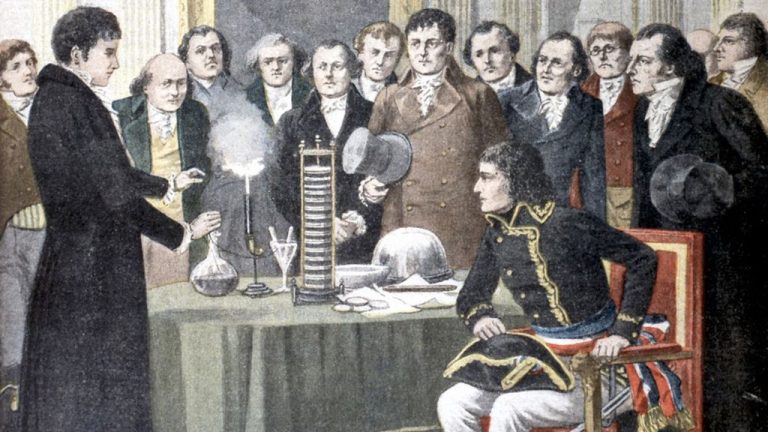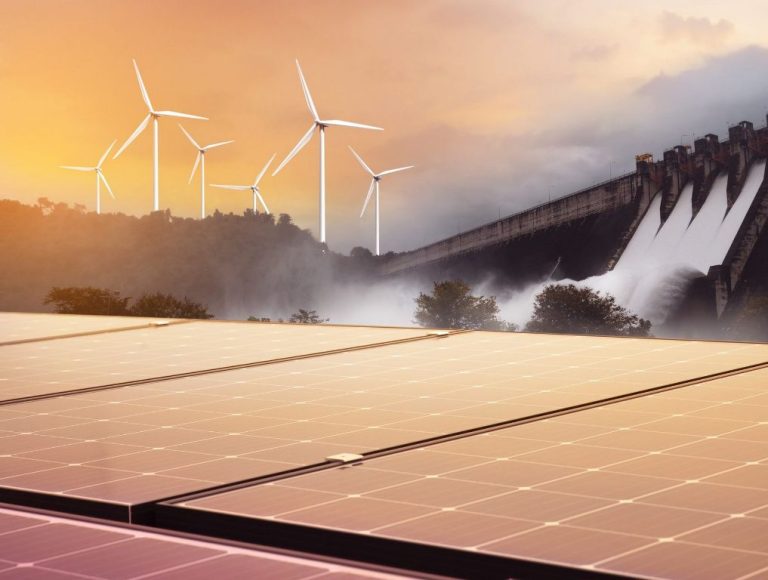What Is Physical Energy Examples?
Physical energy is the energy associated with objects and systems due to their motion and position. It is one of the most fundamental concepts in physics and is crucial to understanding phenomena in the natural world.
There are several major forms of physical energy that will be discussed here:
- Kinetic Energy – the energy of motion
- Potential Energy – stored energy due to position or state
- Radiant Energy – energy of electromagnetic radiation
- Nuclear Energy – energy stored in the nucleus of atoms
- Mechanical Energy – sum of kinetic and potential energy in mechanical systems
- Electrical Energy – energy due to electric fields and charges
- Chemical Energy – energy stored in the bonds between atoms
- Thermal Energy – internal energy of a system from the motion of particles
- Sound Energy – energy transmitted by pressure waves
Physical energy is important because it allows work to be accomplished. The many forms of physical energy can be converted from one to another, transferred between objects and systems, and used to power machines and generate electricity.
Understanding the properties, transformations, and applications of the different types of physical energy provides key insights into many scientific disciplines including physics, chemistry, biology, meteorology, and engineering.
Kinetic Energy
Kinetic energy is the energy an object possesses due to its motion. It is defined as the work needed to accelerate a body of a given mass from rest to its stated velocity. Having mass and velocity, the body has the capacity to do work. There are several examples of kinetic energy:
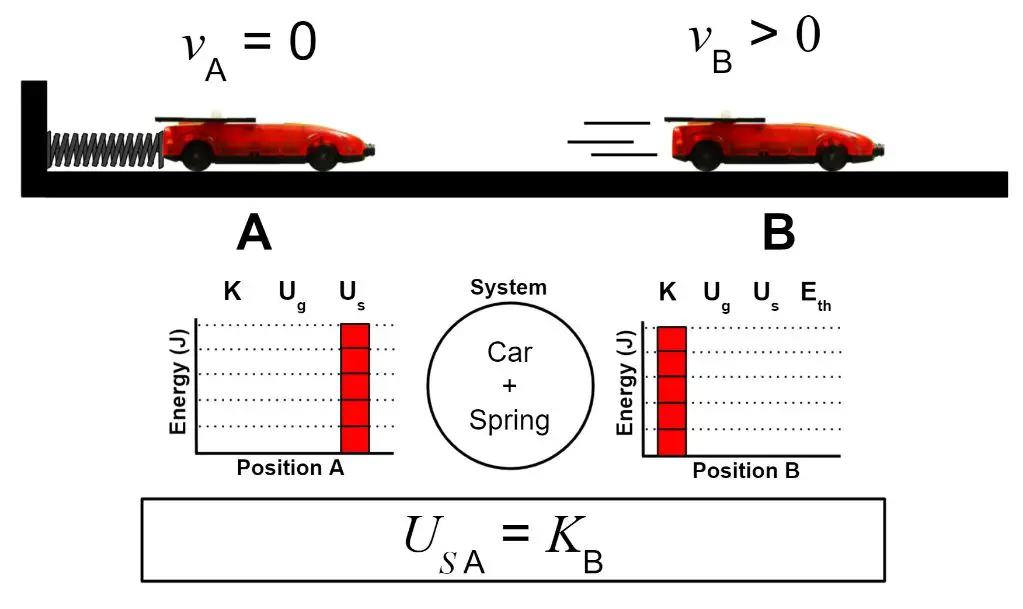
- A moving object – The faster an object moves, the more kinetic energy it possesses. For example, a car moving at 10 mph has more kinetic energy than one moving at 5 mph.
- Vibrating atoms – At the atomic level, the atoms within molecules are constantly vibrating. This vibrational motion represents a form of kinetic energy.
- Electrons moving around the nucleus of an atom – The motion of these subatomic particles represents kinetic energy.
- Wind – The motion of air molecules in the wind carries kinetic energy.
- Waves – Waves in water and sound waves both carry kinetic energy as they propagate.
In each case, the kinetic energy depends on the object’s mass and velocity – the more massive and faster an object moves, the greater its kinetic energy.
Potential Energy
Potential energy is the energy that gets stored in an object due to its position or shape. There are several different types of potential energy including gravitational potential energy and elastic potential energy.
Gravitational potential energy is energy stored in an object due to gravity. For example, a book sitting on a table has gravitational potential energy. If it falls off the table, the potential energy gets converted into kinetic energy as the book gains speed. The higher the book is above the ground, the more potential energy it has.
Elastic potential energy is energy stored in elastic materials that are stretched or compressed. A spring that is compressed or stretched has elastic potential energy. When released, the spring converts the potential energy into kinetic energy as it goes back to its normal shape. The more a spring is compressed or stretched, the more potential energy it has.
Other examples of potential energy include chemical potential energy stored in batteries and food, electric potential energy stored in charged particles, and nuclear potential energy stored in the nuclei of atoms.
Radiant Energy
Radiant energy is the energy that is transferred by electromagnetic radiation. This includes visible light, radio waves, infrared radiation, ultraviolet radiation, X-rays, and gamma rays. Radiant energy travels through space or any transparent medium in the form of waves. Unlike heat conduction or convection, radiant energy can travel through empty space where there is no medium to transfer the energy.
Some examples of radiant energy in everyday life include:
- Sunlight: The light and heat that reaches the Earth from the Sun is a form of radiant energy. The Sun produces energy through nuclear fusion reactions, which is released as electromagnetic radiation.
- Incandescent light bulbs: Light bulbs work by heating a metal filament inside the bulb, causing it to glow and emit visible light radiation.
- Microwaves: Microwave ovens cook food using microwave radiation, which is absorbed by water molecules in the food and converted into heat energy.
- Infrared radiation: Infrared radiation is emitted by all objects and living things due to their internal heat. Night vision goggles detect infrared radiation to see in the dark.
- Radio waves: Radio and television broadcasts, wireless communications, and radar all rely on radio waves, a type of low-frequency electromagnetic radiation.
In summary, radiant energy encompasses all the different forms of energy that travel through space as electromagnetic waves. Light and heat are the radiant energies we experience most frequently in everyday life.
Nuclear Energy
Nuclear energy is energy stored in the nucleus of an atom. It is released when the nuclei are combined or split apart. There are two main types of nuclear energy – nuclear fission and nuclear fusion.
Nuclear fission is the splitting of a large atomic nucleus into smaller nuclei. This process releases massive amounts of energy. Nuclear power plants use fission to generate electricity. In these plants, uranium nuclei are bombarded with neutrons which causes them to split apart into lighter elements. This reaction also releases additional neutrons which can split other uranium nuclei, creating a chain reaction. The heat from fission is used to boil water into steam which spins a turbine to generate electricity.
Nuclear fusion is the combining of two light atomic nuclei into a heavier single nucleus. This process releases even more energy than fission. The sun produces energy through fusion by fusing hydrogen nuclei into helium. Scientists are researching fusion as a future energy source, but the technology is not yet ready for commercial use. Fusion reactors aim to generate power by fusing isotopes of hydrogen like deuterium and tritium.
Mechanical Energy
Mechanical energy is the energy possessed by an object due to its motion or position. Mechanical energy can be either kinetic energy (energy of motion) or potential energy (stored energy of position).
Some examples of mechanical energy include:
- A stretched or compressed spring contains elastic potential energy.
- A raised weight has gravitational potential energy.
- The energy of a moving bowling ball is kinetic energy.
- A rotating flywheel contains rotational kinetic energy.
- A compressed gas contains potential energy that can become kinetic energy when released.
In each example, there is energy stored in the object’s configuration. This mechanical energy has the capacity to do work, like propelling objects or generating heat.
Electrical Energy
Electrical energy is energy that comes from electric charges. It is a form of kinetic energy produced by the movement of electrons. Some common examples of electrical energy include:
Batteries – Batteries contain positive and negative terminals. Chemical reactions inside the battery cause electrons to flow from one terminal to another, producing an electric current that can power devices.
Generators – Generators use rotational motion to induce a voltage and generate electricity. For example, wind turbines and hydroelectric dams spin turbines that activate electromagnets and generate electricity.
Lightning – Lightning is a massive electrostatic discharge between electrically charged regions in clouds or between a cloud and the Earth’s surface. This sudden flow of electrons creates a bright flash of lightning.
Electrical energy is extremely useful because it can be converted into almost any other form of energy. It allows electricity to be transmitted over power lines for use in homes, businesses, and industry. Understanding electrical energy helps explain how batteries, generators, lightning, and many other phenomena work.
Chemical Energy
Chemical energy is the potential energy stored in the bonds between atoms and molecules. It is energy stored in the form of chemicals.
Some common examples of chemical energy include:
- Batteries – The chemical reactions within batteries produce an electric current that can be used to power devices.
- Food – The calories in food represent stored chemical energy that our bodies convert to mechanical energy through metabolism.
- Fossil fuels like coal, oil, and natural gas – These store ancient biomass energy from plants and organisms that was converted into hydrocarbons over millions of years. Burning fossil fuels releases this stored chemical energy.
Chemical energy is converted and released when chemical bonds are broken through chemical reactions. This can produce other forms of energy like heat, light, electricity, and motion.
Chemical energy is an extremely useful and efficient way to store energy. Batteries, fuels, and food all utilize chemical bonds to store energy in a stable, dense, and portable form that can be tapped into when needed.
Thermal Energy
Thermal energy refers to the internal energy present in substances due to the motion and vibration of their particles. It is directly associated with the temperature of matter. The higher the temperature, the greater the thermal energy contained within. Thermal energy is transferred between substances when they are in thermal contact. This transfer of thermal energy continues until both substances reach the same temperature, also known as thermal equilibrium.
There are several common examples of thermal energy:
- Heat contained within objects – All matter contains some thermal energy related to the kinetic energy of its particles. The more the particles vibrate and move, the more thermal energy is present.
- Steam – As water is heated, it absorbs thermal energy, increasing the motion of its molecules. Once the water reaches its boiling point, it transforms into steam, which has a high amount of kinetic energy.
- Combustion – Burning fuel such as wood, gasoline or natural gas releases a large amount of thermal energy quickly as the chemical bonds are broken.
Thermal energy is important in many applications including cooking, heating and energy generation. The transfer and conversion of thermal energy is a key principle in thermodynamics and allows many essential technologies to function.
Sound Energy
Sound energy is the energy associated with waves that transmit sound. It is a form of mechanical energy produced when an object vibrates rapidly. This vibration creates waves of pressure that travel through a medium like air, water or solid objects. The energy in these waves is what we perceive as sound.
Some common examples of sound energy include:
- Musical instruments – The vibration of strings, membranes and air columns in instruments like guitars, drums and flutes creates sound waves that travel to our ears.
- Clapping – Clapping hands together rapidly pushes the air, creating vibrations that become sound waves.
- Voices – Vocal cords and air from our lungs work together to create vibrations as we speak, transforming energy into sound waves.
- Loudspeakers – Electric signals are converted into mechanical energy by speakers, producing vibrations that create sound waves.
In all these examples, the vibration of an object causes perturbations and waves in the surrounding medium, which carry energy in the form of sound to our ears. The greater the amplitude and frequency of vibrations, the greater the sound energy.

